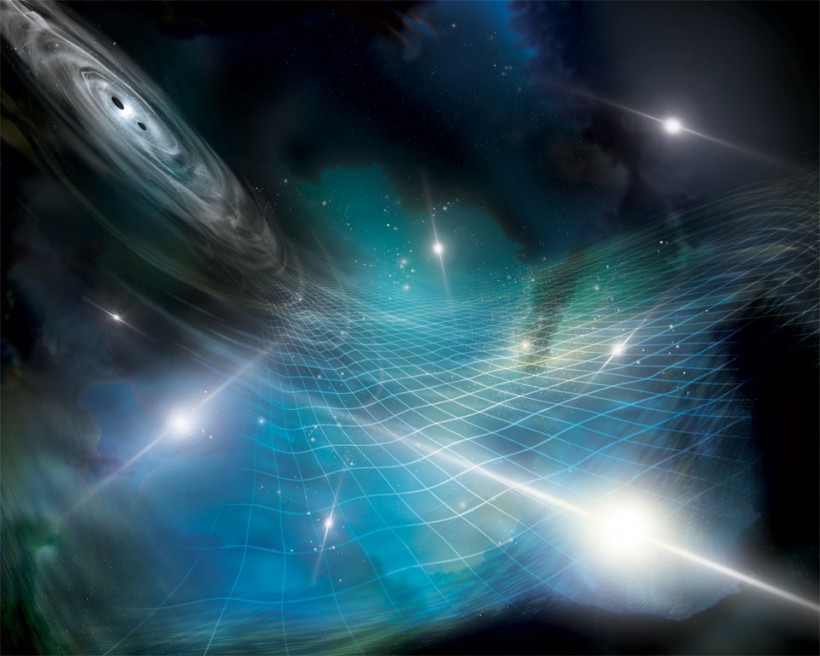A tantalizing window into the mysteries of the cosmos has been opened as NASA showcases a captivating image that delves deep into the intricate relationship between pulsars, gravitational waves, and the enigmatic supermassive black hole binaries.

NANOGrav's radio telescopes observed 68 pulsars, unveiling evidence of a gravitational wave background. Slight shifts in pulse arrival times, correlated across pulsars, suggest gravitational waves as the cause. This background likely arises from countless supermassive black hole binaries. International teams confirmed similar findings. Previously, LIGO and Virgo detected higher-frequency gravitational waves from merging objects. The illustration showcases orbiting supermassive black holes and pulsars with timing shifts, depicting the impact on spacetime through a distorted grid.
Monitoring 68 Pulsars
This remarkable revelation stems from the North American Nanohertz Observatory for Gravitational Waves (NANOGrav), whose efforts have involved monitoring 68 pulsars using cutting-edge radio telescopes.
With meticulous precision, NANOGrav has scrutinized the arrival times of pulsar pulses, unearthing compelling evidence that points to the existence of a gravitational wave background.
These subtle temporal shifts, intricately correlated across different pulsars, serve as a resounding testament to the powerful influence of gravitational waves.
It is postulated that this background phenomenon emerges from the collective presence of hundreds of thousands, if not millions, of supermassive black hole binaries dispersed throughout the vast expanse of space.
The significance of this groundbreaking discovery resonates beyond the boundaries of NANOGrav, as research teams from Europe, Asia, and Australia have independently confirmed and reported their own findings.
Until now, gravitational wave detection primarily centered around higher-frequency events, notably the merging of individual pairs of massive orbiting objects, such as stellar-mass black holes, as observed by the LIGO and Virgo detectors.
However, NANOGrav's latest revelation ventures into uncharted territory, exploring the realm of pulsars and revealing an entirely new facet of the gravitational universe.
Cosmic Ballet
To convey the magnitude of this discovery, NASA featured a captivating illustration. The artwork portrays a cosmic ballet, featuring two supermassive black holes engaged in an orbital dance, surrounded by a constellation of pulsars adorned with delicate temporal shifts.
This visually stunning representation encapsulates the essence of gravitational waves and their profound imprint on the very fabric of spacetime, portrayed through the mesmerizingly distorted grid that permeates the image.
This remarkable image stands as a testament to humanity's unwavering pursuit of knowledge and insatiable curiosity about the intricacies of the universe.
The delicate interplay between pulsars, gravitational waves, and supermassive black hole binaries unravels a cosmic tapestry that stretches the boundaries of our imagination, while simultaneously challenging our understanding of the vastness that envelops us.
As we embark on this extraordinary journey of discovery, NASA's unveiling of this image serves as a poignant reminder of our quest to decipher the enigmas of the cosmos, paving the way for a deeper comprehension of the fundamental forces that shape our universe.
Related Article: NASA's Hubble Space Telescope Captures 'Butterfly Nebula' In Stunning Motion | Fun Facts About This Beautiful Space Butterfly









